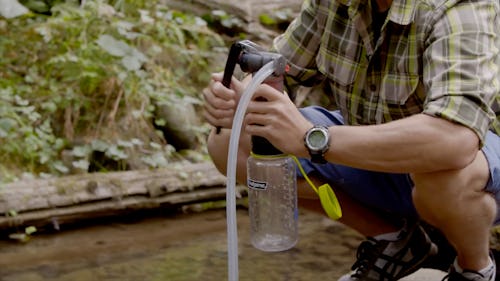
Water is the most important consideration in any adventure. Unless you want to be lugging around liters and liters of H2O, or you have the water retention capacities of a camel, you’ll need a plan for obtaining clean, bacteria-free water on your adventure.
Some hikes are blessed with springs and streams so crystal clear that you can drink filter-quality water straight from the source; others have little more than murky puddles. Camping in the Argentinian desert, I drank water the color of weak tea, silt-filled and disgusting. It was safe to drink, but tasted like sludge. I’d purified the water, but I hadn’t filtered it, and it’s not an experience that I’m keen to repeat. So how do you know whether your water needs purifying or filtering, and which purifier or filter should you go for? Let me impart my wisdom.
Water filters vs. water purifiers.
First, let’s look at why we filter and/or purify water. There are five main reasons: to get rid of viruses, bacteria, parasites, chemical pollutants, and turbidity (essentially, the gunk and mud that makes your water taste and look unappetizing, just as mine did in the desert). Drinking contaminated water will make you very sick, and can even have fatal consequences.
Water filters are great against everything except viruses. In countries where sewage systems are less advanced, a filter is often not sufficient, and you’ll need to purify your water. Purifiers, however, do nothing against turbidity. The most important thing is to research your destination before you set off to check whether a filter or purifier is most practical.
I need a water filter. What different types are there?
This is where it gets fun because there are many different types to choose from. Bottle filters are becoming increasingly popular for fast packers, cyclists, and ultralight backpackers as they’re lightweight, compact, and attach directly to the neck of your bottle so that you can drink on the go. They’re a fantastic option for solo adventures when you’ll come across water sources regularly. They don’t score so well when water is thin on the ground, because they’ll only filter as much as you can store in your compatible bottle.
Straw filters are similar to bottle filters, but rather than being designed to slot onto a bottle, they allow you to drink straight from the source (kind of like a lion at a watering hole). They’re ultra-lightweight and compact, but should only be relied upon when you can guarantee near constant water sources, as they don’t come with any storage facility at all. They’re fantastic for freshwater stand up water paddling (SUP) and kayaking adventures.
Pump filters work by pumping water from a source into a bottle. They work very well with shallower sources (nearly dry rivers, puddles, and pools), and have the added advantage that you can pump as much water as you like and fill all of your receptacles, so they’re fantastic for group expeditions. Pump filters are much heavier than the first two, though, and do require some manual effort, which can be tedious after a physical day.
Then there are gravity filters, a faster and less labor-intensive alternative to pump filters. They filter large quantities of water speedily simply by filling the bag from a reservoir/lake/stream etc. and hanging it upside down to let gravity do the rest. The downside is that they’re often heavy and expensive, and you’ll need somewhere to hang it. If you’re in the Patagonian hinterland with 100km/hour winds and not a tree in sight, this may not be for you.
I’m going somewhere where I’ll need a purifier. Which should I get?
UV water purifiers are a cool gadget, there’s no doubt about it. They’re compact and they require no effort whatsoever. UV light purifiers on the lid of a bottle sterilize bacteria and viruses, and allow you to drink clean water right away with no wait time. They don’t, however, filter out the gunk. They’re also often expensive, battery-operated, and liable to break, leaving you in a bit of a pickle.
Good old chemical purification tablets are a simple, wallet-friendly option if you’re backpacking in areas prone to viruses. Simply pop a tablet into a liter of water and wait 30 minutes for it to work its magic. Thirty minutes feels like a lifetime when you’re thirsty; the tablets do nothing for turbidity and your water often tastes like you’ve ingested a swimming pool.
If all else fails, you can boil water to sterilize it (one minute unless you’re at over 3,000-feet of altitude, where you’ll need to boil it for three minutes). This is fantastic for water for cooking, but undeniably a faff if it’s your only method of obtaining drinking water. No one wants to have to get out their stove mid-hike and boil drinking water, only to try to quench your thirst with scalding liquid. Plus, your fuel will run out much faster.
Once you’ve established whether you need a water filter, a water purifier, or both, these are some of the best to go for.
Input may receive a portion of sales if you purchase a product through a link in this article. We only include products that have been independently selected by Input's editorial team.
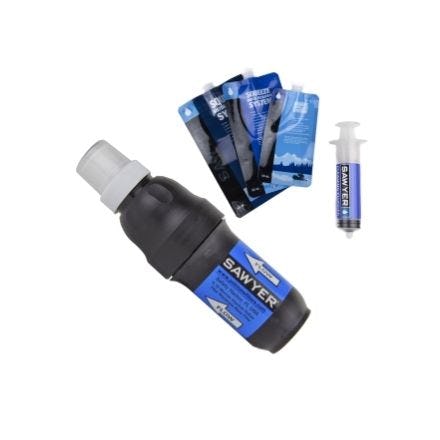
The Sawyer Squeeze Water Filtration System was made to endure the test of time and comes with a lifetime warranty. It’s hard to find a more compact, lightweight option (just 2 ounces, this fits in a pocket). It removes almost all sediment and bacteria, and 100 percent of microplastics. If you’re traveling to a place with extreme temperatures, be aware that this water filter might be damaged by freezing conditions, and there’s no way to tell.
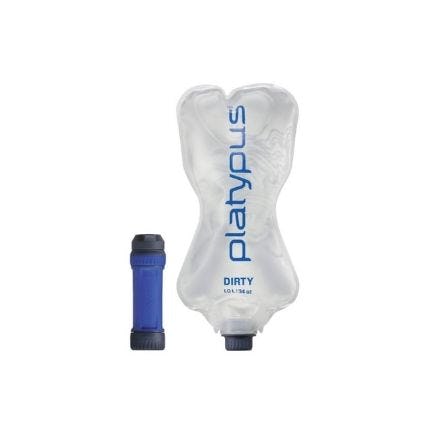
At 3.3 ounces, this is another ultra-lightweight option, and the filtering speed is impressive (3l a minute), so there’ll be no hanging around to drink with the Platypus QuickDraw Microfilter. It comes with a compatible 1L reservoir and hollow fiber filter cartridge which is very easy to clean, simply shake it to clean it, or perform a quick, tool-free backflush.
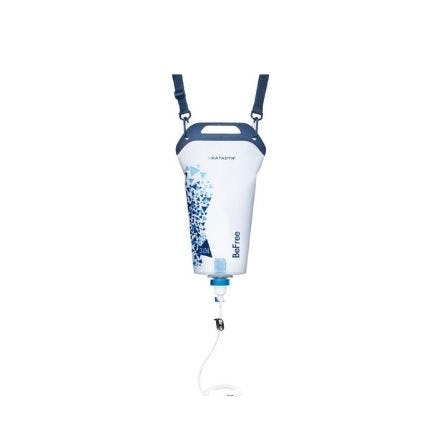
At just shy of 7 ounces, the Katadyn BeFree Gravity Water Filtration System weighs next to nothing when split between a small group (it’s recommended for groups of between two and five people). It filters 2L of water per minute with absolutely no effort required, as it’s a gravity filtration system you simply hang the bag. The EZ-Clean Membrane is, as the name suggests, easy to use, simply swill with water. The carry strap is a great design feature for transporting water to and from the source.
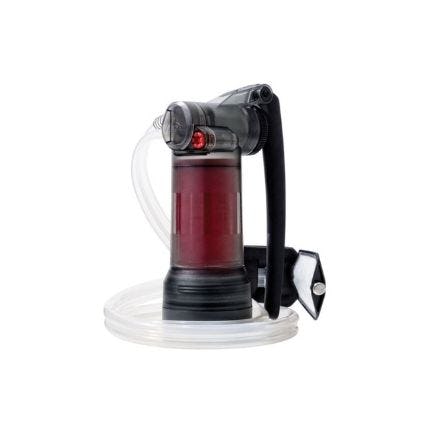
This was easily the most expensive bit of gear analyzed, but the MSR Guardian Purifier both filters and purifies water. It’s incredibly durable and can survive being dropped (within reason, MSR tests it by dropping it from a height of 6 feet, we’re not suggesting that you lob it off the top of a skyscraper). At roughly half a kilo, this is a heavier piece of gear designed for expeditions and harsh environments rather than fast-packing adventures.
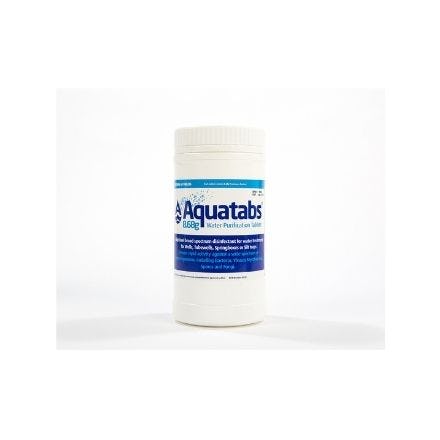
Aquatabs have a shelf life of three years and since they’re so tiny they should form part of any traveler’s first aid kit. One tablet purifies between one and two liters of water within 30 minutes and is extremely effective against viruses and bacteria. Remember that purifying water does nothing against turbidity, and, as with most water purification tablets, your water will taste a little chlorinated.
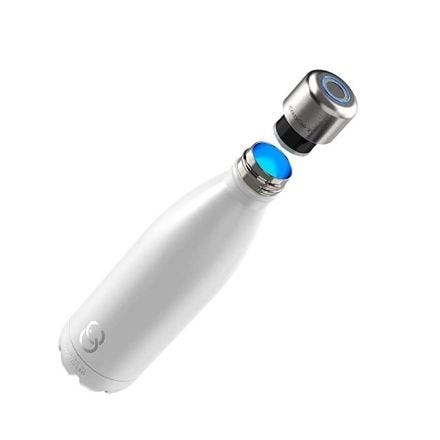
The CrazyCap 2 uses UVC purification technology to rapidly purify water on the go, with no effort required from the user. Rather than being battery-operated like many UV purification systems, this one uses a charger. It won’t, however, remove chemicals, metals, or turbidity, and the amount of water that you can purify at once is restricted by the size of the bottle. It keeps liquids cold for up to 24 hours or hot for up to 12 hours, and is a fantastic option for day-to-day exploring or sightseeing in destinations with poor water quality.
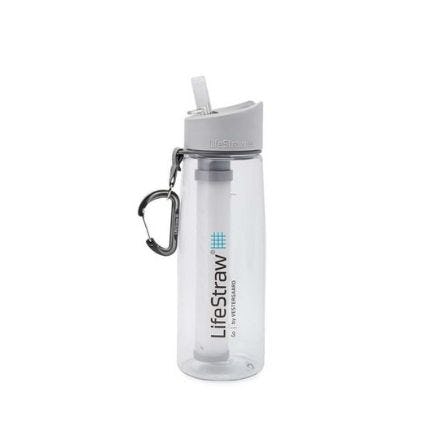
LifeStraw has become synonymous with providing good-quality water filters. Their bottles come with filters that are dishwasher safe and proven to work for months at a time. The LifeStraw Go includes a replaceable carbon filter that typically lasts up to three months, or 26 gallons of water, and a membrane microfilter that lasts up to 1,000 gallons. Since the filter straw is compatible with the bottle, it only filters 1L of water at a time. Especially great for solo adventurers.







